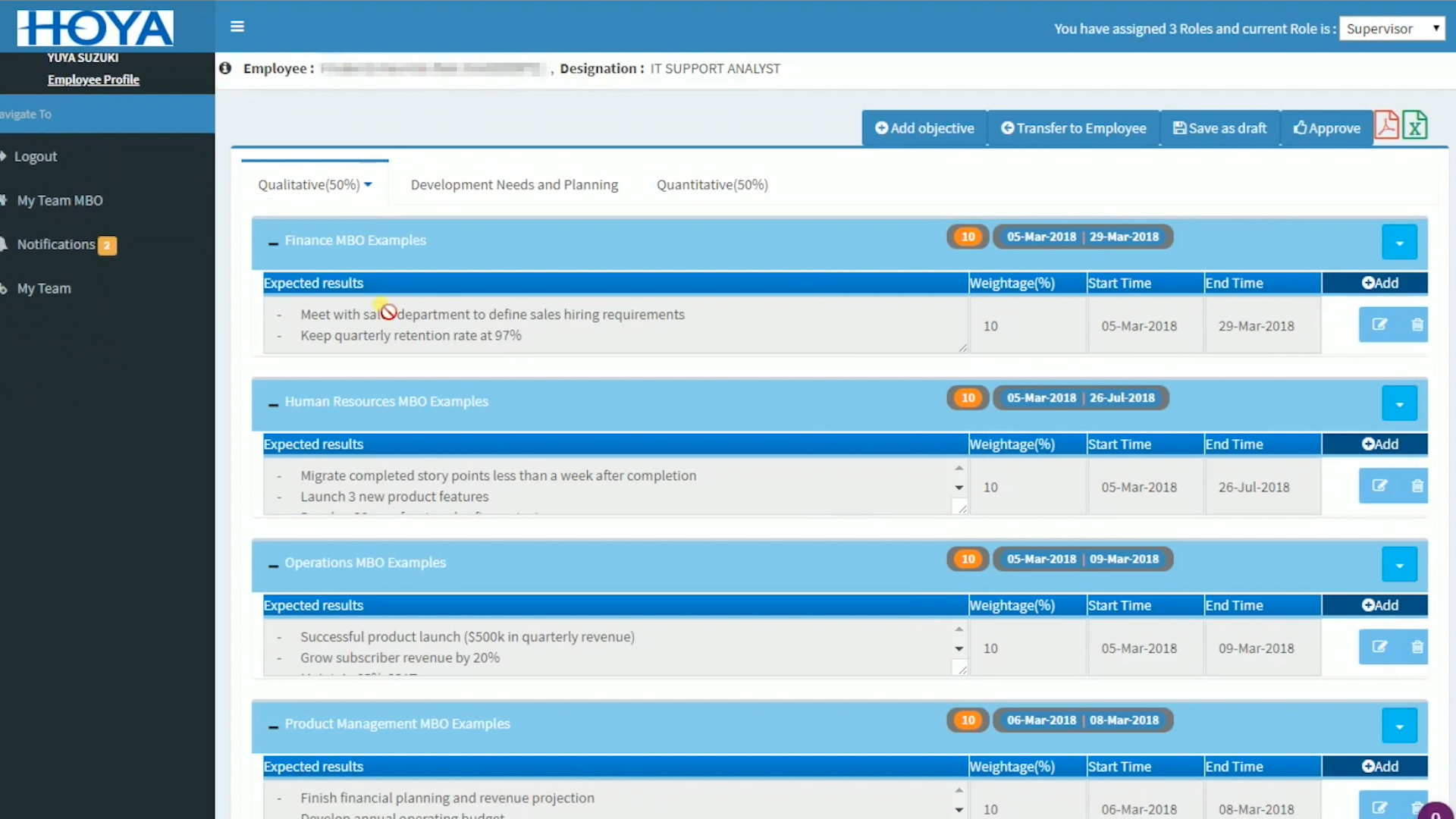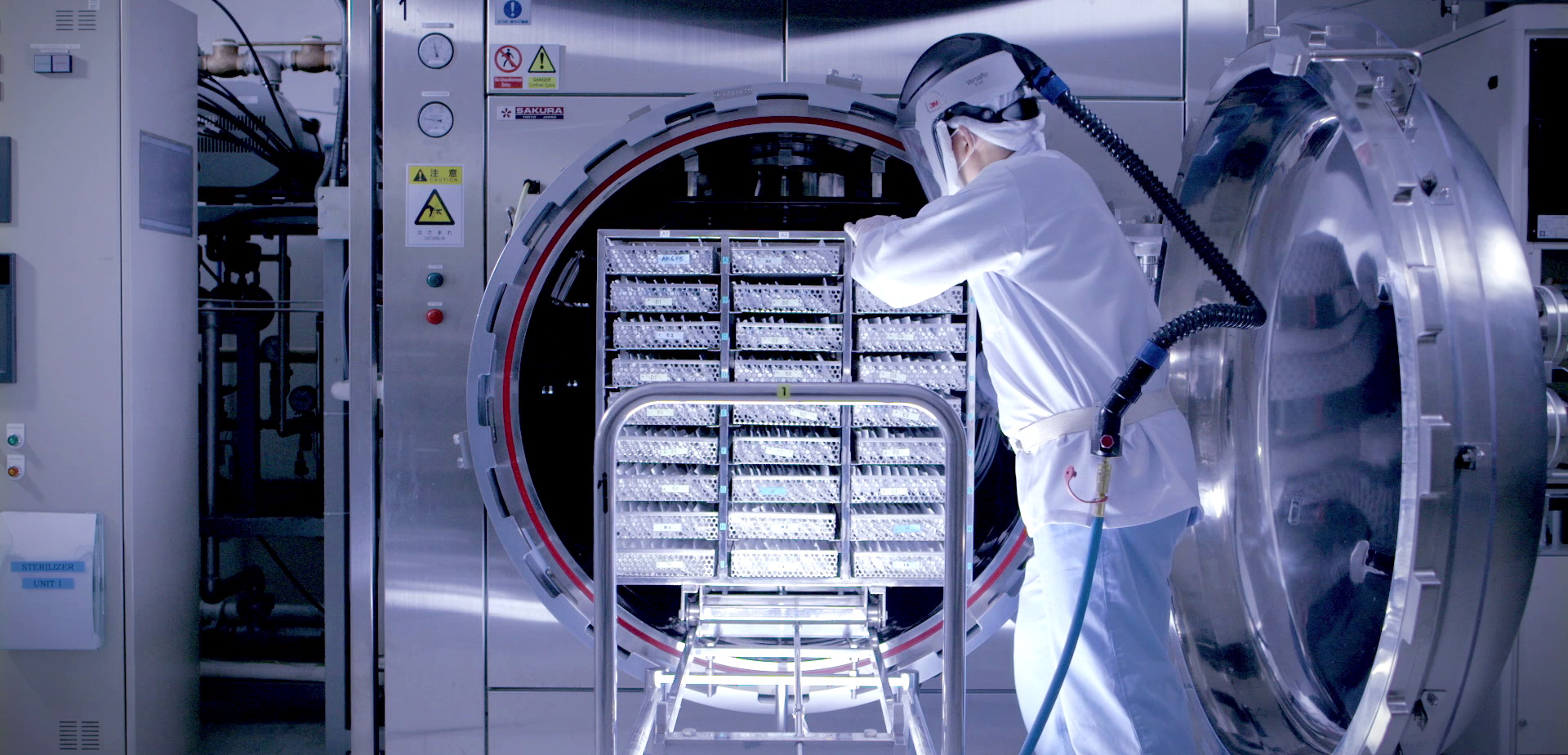When HOYA Surgical Optics (HSO) first began manufacturing intraocular lenses (IOL) in 1987, the company had its eye firmly set on becoming the leading IOL company in the world. Today, HSO has crossed the 30th anniversary mark and is now the third largest in terms of IOL revenue.
But the aspiration of being first is never out of sight for HSO. “We have very aggressive plans to become the future market leader in the IOL industry. That is our ambition,” Nobuhiko Shibata, VP of Global IT for HSO confidently remarked.
However, the company soon recognised that some cumbersome internal processes, even within its Human Resource (HR) function, was impeding them from building an even more focused and productive workforce.
Clouded with inefficiencies from intensive paper work
Take for example, its employee appraisal system, which is built on the Management by Objectives (MBO) model.
In order to complete appraisals, employees had to fill in an Excel form, and then physically scan and print the sheets to be shared with their supervisors for discussion and to receive approval on the goals they have set for themselves. Each cycle involved at least three rounds of back and forth between employees and their supervisors, before submission to the HR department. This highly manual system not only made success tracking increasingly difficult, there was also a lot of time wastage, especially since appraisals needed to be completed three times each year.
In fact, the laborious appraisal process is just the tip of the iceberg for the organisation’s entire HR operations, which still relies heavily on manual processes. However, it also presents the best starting point for HSO to embark on its HR digital transformation journey, in line with the company’s growth.

“As our employee size increases across different markets and different time zones, it was necessary for us to improve on our processes to better enable the business and improve our efficiencies,” Grace Tan, VP of Global HR explained.
This sentiment is similarly echoed by Mr Shibata. “To become the market leader, we need to accelerate our growth. And IT is one of the enablers to support our success.”
IT as an enabler to streamline HR processes
The task of kickstarting HR transformation through technology was entrusted to Toh Yee Peng, Senior IT Manager of HSO.
There were several key considerations for Mr Toh as he worked on building an automated online system to pool together all employee MBO forms. First, it must be easy to use. The improved system, which is simply named, ‘e-MBO’, features familiar keywords found in the old Excel-based form. A clean and simple look was adopted for the Graphical User Interface so the e-MBO application will not look too complex or intimidating for first-time users.

Most importantly, the system functions must fulfil the organisation’s HR needs. Off-the-shelf HR software did not provide HSO with the flexibility of customisation to meet their specific requirements. This was not practical for HSO, as they needed to look beyond the e-MBO system and plan for the flexible integration of the entire chain of HR applications in future. Microsoft Azure Infrastructure as a Service (IaaS) provided Mr Toh with the options he required, without any additional hassle. “We are already on Office 365 and Exchange Online. So people already know the platform and users don’t need to be retrained again,” Toh commented.
Hosting the e-MBO system on the cloud meant that it can be readily accessed anywhere, anytime, in a secure manner. Microsoft Azure was also a cost-effective solution, as the dynamic scaling capabilities meant that cloud usage could be dialled down during off-peak periods, depending on demands.

A clearer vision for the future
The successful implementation of the e-MBO system is most evident in the time savings achieved by users. While the old manual search and verification may take up to three to four weeks, appraisal data can now be easily pulled out in just a few minutes, much to the delight of the staff and management.
This is only the start of the transformation journey as HSO continues to streamline its wider HR applications. “With the success of the e-MBO system, we will be leveraging on Microsoft Azure cloud for upcoming processes within the HR and other departments,” Mr Toh revealed.
Mr Shibata added, “Microsoft technologies can help us to accelerate standardisation and simplification, so employees can focus more on core priorities.”
“This is just our first step. We will leverage this success to the next level, and look towards having a broader technology-enabled system for managing HR.”

